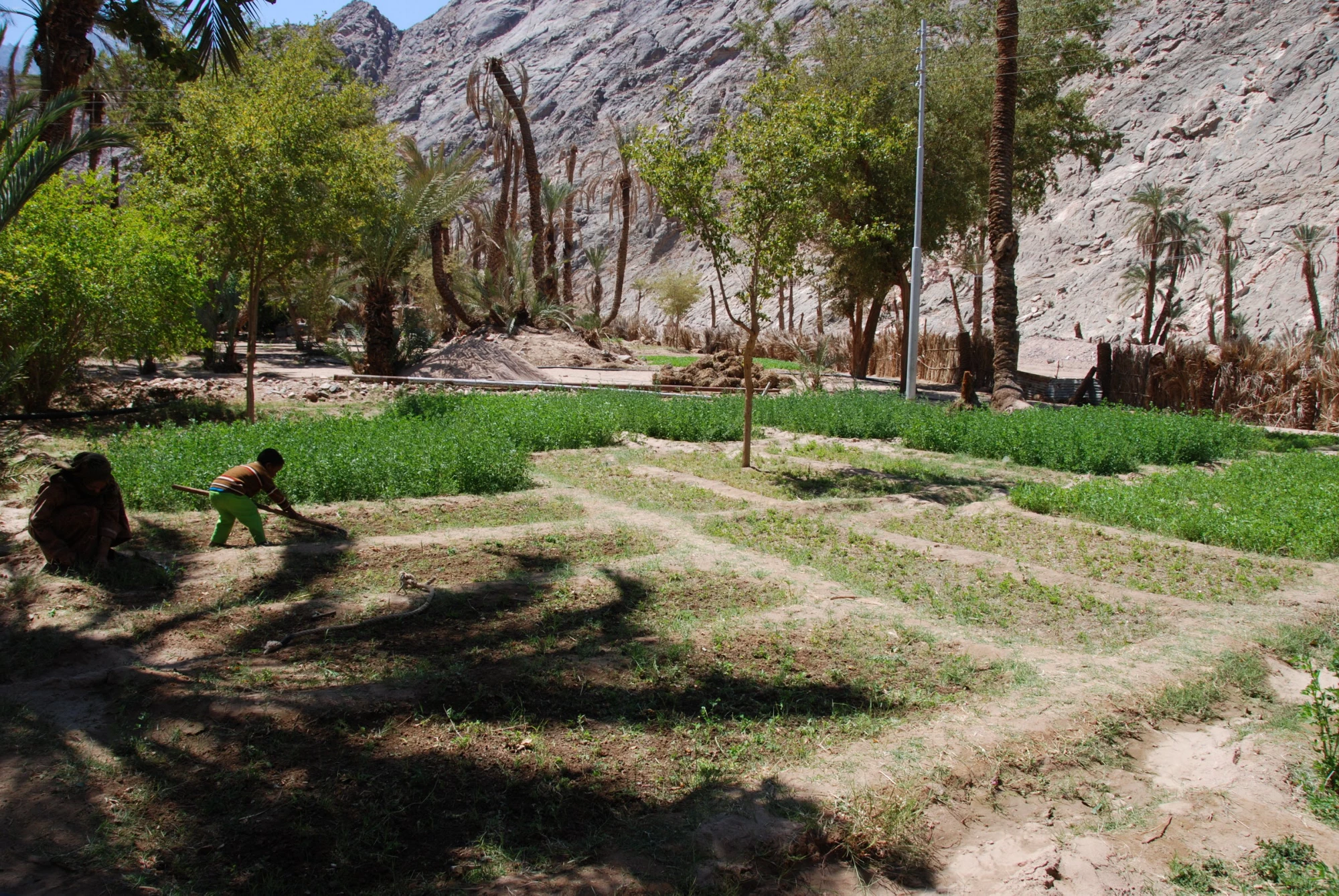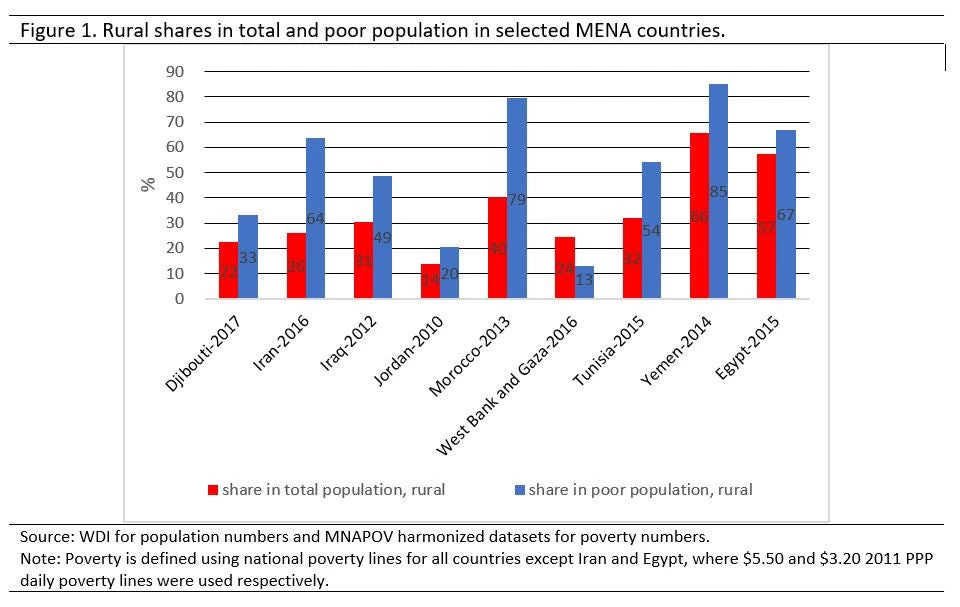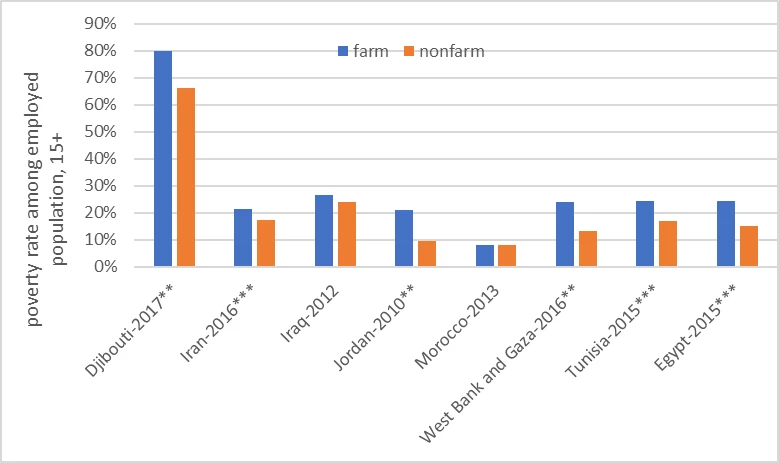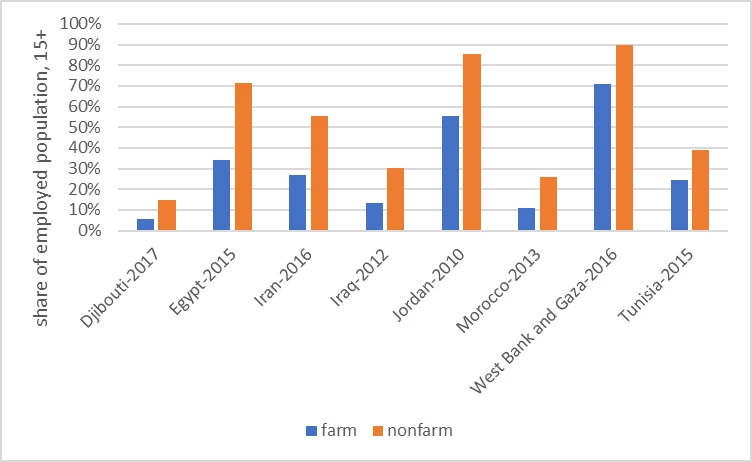 Dans la région MENA — l’une des régions du monde les plus soumises à des contraintes foncières et hydriques — l’agriculture n’offre pas forcément un grand potentiel.
Dans la région MENA — l’une des régions du monde les plus soumises à des contraintes foncières et hydriques — l’agriculture n’offre pas forcément un grand potentiel.
In the developing countries of the Middle East and North Africa region (MENA) more than 60% of the population lives in urban areas. At the same time, poor people are disproportionately concentrated in rural areas (figure 1). For example, according to the World Development Indicators, 40% of Morocco’s population in 2013 lived in rural areas, while 79% of poor people (defined using the national poverty line) lived in rural areas. What this shows is that to reduce poverty in MENA countries, we need to pay close attention to rural areas.
Investing in the agricultural sector and improving agricultural productivity is key to eradicating poverty, hunger, and malnutrition. However, in MENA, which is one of the most land- and water-constrained regions in the world, the potential for agriculture might be limited. Diversifying out of agriculture into non-farm activities in rural areas may be another pathway to reduce poverty. Indeed, the share of non-farm employment in rural areas of MENA countries is quite high and is correlated with the size of arable land per person, as shown in figure 2. Rural non-farm activities play an important role in Djibouti, Jordan, and the West Bank and Gaza where land is at a premium.
| Figure 2. Share of rural non-farm employment among adults 15+ and the size of arable land per person in selected MNA countries |
|
|
| Source: WDI for land size numbers and MNAPOV harmonized datasets for employment numbers. Note: MNAPOV collection includes only household budget surveys, and employment numbers can be different from the numbers obtained in labor force surveys. |
Employment in the non-farm sector is also associated with lower poverty, as shown in figure 3. This signals that non-farm activities have higher returns than agricultural activities and may have a stronger effect on reducing poverty. On the flip side, this may also signal that poor people may not necessarily be able to access non-farm activities due to constraints such as access to finance, skills, and education, among others.
| Figure 3. Rural poverty rates among employed population in farm and non-farm activities in selected MENA countries, 15+ |
| |
| Source: MNAPOV harmonized datasets, authors’ calculation. Note: Poverty is defined using national poverty lines for all countries except Iran and Egypt, where $5.50 and $3.20 2011 PPP daily poverty lines were used respectively. *** statistically significant difference at 1%, ** 5%, * 10%. Yemen’s 2014 data point is dropped because of inability to separate farm from non-farm employment in rural areas. |
Indeed, education seems to be an important factor associated with access to rural non-farm activities among MENA countries. Figure 4 shows the share of population above age 15 who are employed in farm and non-farm activities in rural areas, who have attained secondary education and more. In each MENA country reported, better-educated individuals are more likely to engage in rural non-farm activities compared to farming.
To sum up, despite urbanization, poverty is still concentrated in rural areas of many developing MENA countries. Poverty reduction in water- and land-constrained rural areas of the region may not only require improving agricultural productivity, but also ensuring access to non-farm activities. According to the most recent household surveys, the rural non-farm sector is associated with lower poverty in many developing MENA countries, but the poor might have difficulties in accessing these opportunities. To ensure poverty programs achieve success in the region, we need to better understand the development of and access to rural non-farm activities.
| Figure 4. Shares of population with incomplete secondary education and above among employed farm and non-farm activities in rural areas of selected MENA countries, 15+ |
| |
| Source: MNAPOV harmonized datasets, authors’ calculation. Note: Farm includes crop and livestock production, fishing and hunting. The gap between farm and non-farm activities becomes narrower if the public sector is dropped from non-farm activities, but still remains substantial. |







Join the Conversation